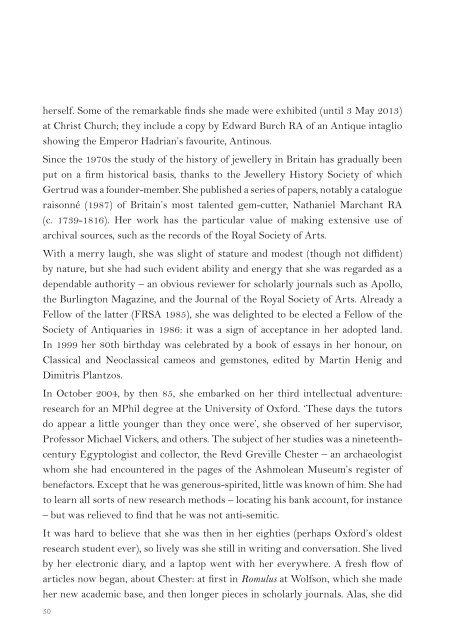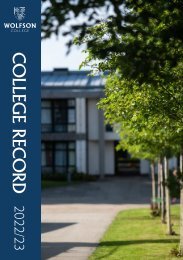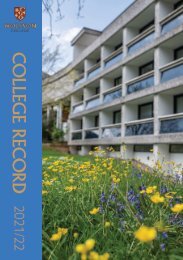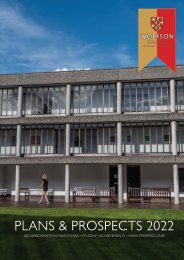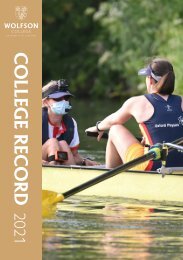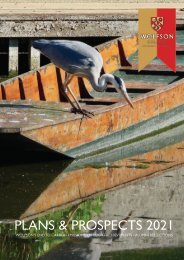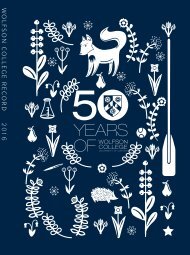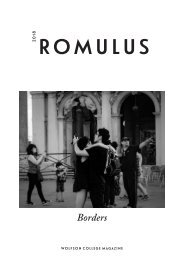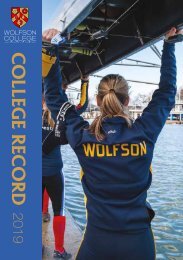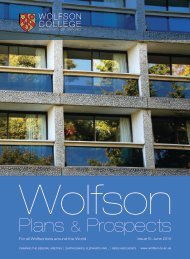You also want an ePaper? Increase the reach of your titles
YUMPU automatically turns print PDFs into web optimized ePapers that Google loves.
herself. Some of the remarkable finds she made were exhibited (until 3 May <strong>2013</strong>)<br />
at Christ Church; they include a copy by Edward Burch RA of an Antique intaglio<br />
showing the Emperor Hadrian’s favourite, Antinous.<br />
Since the 1970s the study of the history of jewellery in Britain has gradually been<br />
put on a firm historical basis, thanks to the Jewellery History Society of which<br />
Gertrud was a founder-member. She published a series of papers, notably a catalogue<br />
raisonné (1987) of Britain’s most talented gem-cutter, Nathaniel Marchant RA<br />
(c. 1739-1816). Her work has the particular value of making extensive use of<br />
archival sources, such as the records of the Royal Society of Arts.<br />
With a merry laugh, she was slight of stature and modest (though not diffident)<br />
by nature, but she had such evident ability and energy that she was regarded as a<br />
dependable authority – an obvious reviewer for scholarly journals such as Apollo,<br />
the Burlington Magazine, and the Journal of the Royal Society of Arts. Already a<br />
Fellow of the latter (FRSA 1985), she was delighted to be elected a Fellow of the<br />
Society of Antiquaries in 1986: it was a sign of acceptance in her adopted land.<br />
In 1999 her 80th birthday was celebrated by a book of essays in her honour, on<br />
Classical and Neoclassical cameos and gemstones, edited by Martin Henig and<br />
Dimitris Plantzos.<br />
In October 2004, by then 85, she embarked on her third intellectual adventure:<br />
research for an MPhil degree at the University of Oxford. ‘These days the tutors<br />
do appear a little younger than they once were’, she observed of her supervisor,<br />
Professor Michael Vickers, and others. The subject of her studies was a nineteenthcentury<br />
Egyptologist and collector, the Revd Greville Chester – an archaeologist<br />
whom she had encountered in the pages of the Ashmolean Museum’s register of<br />
benefactors. Except that he was generous-spirited, little was known of him. She had<br />
to learn all sorts of new research methods – locating his bank account, for instance<br />
– but was relieved to find that he was not anti-semitic.<br />
It was hard to believe that she was then in her eighties (perhaps Oxford’s oldest<br />
research student ever), so lively was she still in writing and conversation. She lived<br />
by her electronic diary, and a laptop went with her everywhere. A fresh flow of<br />
articles now began, about Chester: at first in Romulus at Wolfson, which she made<br />
her new academic base, and then longer pieces in scholarly journals. Alas, she did<br />
30


